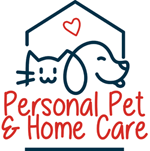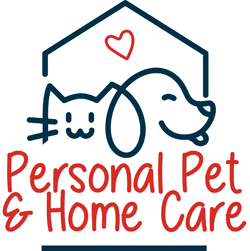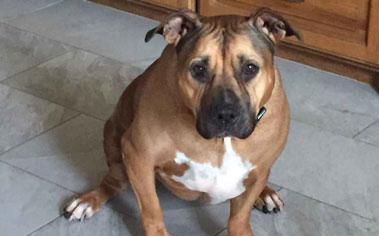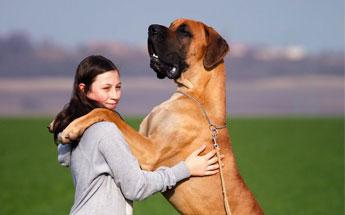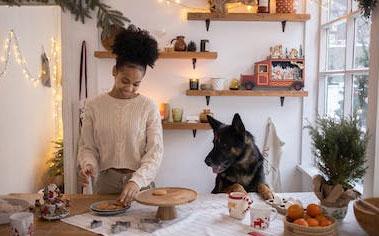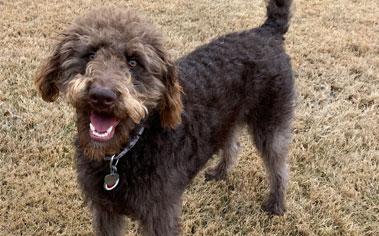Using the Crate to “Train” Your Dog to the House
Always make the crate a pleasant place for your dog to be. If your dog is already house trained and your dog is not a chewer, you can add some soft bedding, such as towels, blankets, or a dog bed inside the crate. Items that are soft that smell like you are particularly good for dogs that are newly adopted, as it will create a pleasant association for the dog with your scent, and this actually is helpful for dogs that are anxious when left alone. However, be sure to monitor this to make sure that the dog doesn’t chew on these items or kick them to the side and eliminate on them. If the dog does this you may need to not leave any bedding in the crate. Give the dog something to chew on, such as a toy. Make sure that the toy is a sturdy one that will not break or be digested by the dog while he is in the crate with it and you are unable to supervise him.
If you are consistent, the dog should quickly learn that the crate is a nice place to be—he gets to lie down in a soft spot and gets to chew on something he enjoys. Dogs who are “house trained” with the crate tend to be less destructive with your household items when left out of the crate because they associate chewing with being in the crate. Puppies under 12 months of age should still be supervised in the house however because the teething stage is a powerful stimulant for chewing. You can also feed the dog in the crate. Many dogs will eat their dinner and cuddle up and fall asleep in the crate. With puppies, you will need to wake them up to take them out to eliminate, and then you can bring them back to the crate to go back to sleep.
If your dog shows anxiety about being in the crate, crate him for very tiny increments. Let him in the crate for 5 seconds and let him out. Repeat. When he appears calm for the 5 seconds, increase to 10 seconds. Repeat. When he has learned to be calm with 10 seconds, increase to 20 seconds, and so on. Do not lock him in the crate and leave if he is anxious. You can also feed an anxious dog in the crate -split his meals up into ten portions, and feed him each portion stretched out during the day to increase the positive association with the crate. Let him out immediately after eating. For his last meal of the day, make it a particularly good meal by adding some sprinkled cheese, or a dab of peanut butter, or some beef or chicken broth to his kibble, and then put it inside the crate and shut the door without letting him in. Wait a minute or two to get him eager to enter the crate and then open the door to let him have his reward. It won’t take long before most dogs will be begging to be let in their crate!
Another method for helping a dog to enjoy the crate is through the use of toys that you can stuff with food such as the Kong, Busy Buddy or Buster Cube, among others. You can stuff the hollow rubber toys with food treats and then give the toy to your dog when he goes in the crate. Most dogs will become very fixated on getting the food out of the toy and will forget about the fact that they are in the crate. You can stuff these toys with a little bit of peanut butter; cream cheese, cheese wiz, cottage cheese, applesauce, plain yogurt, dog biscuits, etc. Be creative! You may even try to freeze it, as this makes it harder for the dog to get the food out and increases the time his attention will be occupied.
Another method for getting your dog used to the crate is to set him up in the crate with some toys and then set the crate near where you will be. For example, if you are sitting down to read the newspaper in the kitchen, set the crate in the kitchen where the dog can see you, and then sit down and read. If you planning on watching a TV show, set the crate up near the couch and proceed to watch your show. Intermittently talk to your dog in a calm, happy tone of voice to let him know he’s being a good boy for calming lying in the crate.
Once you have successfully trained your dog to accept the crate, you can leave the crate open in your house. You may find that your dog will go into the crate and lie down there on his own with the door open, as dogs are “den” animals and instinctively enjoy a nice cozy place they can snuggle into and retire from the world.
Other Don’ts:
- Don’t leave your dog’s collar on when he is crated. A collar can catch on the metal grating and accidentally injure the dog.
- Don’t put the crate in a high traffic area of your house. Find a nice, quiet area for your dog so he will not be overly stimulated by noise and activity passing by him.
- Don’t let children, adults or other animals in the home tease the dog in the crate.
©2011-2022 Pet Sitters International, Inc.
Compliments of Personal Pet and Home Care at AllenPetCare.com. Need a professional pet sitter in the Parker, Texas area, Contact Personal Pet and Home Care here or use our handy pet care booking link here.
